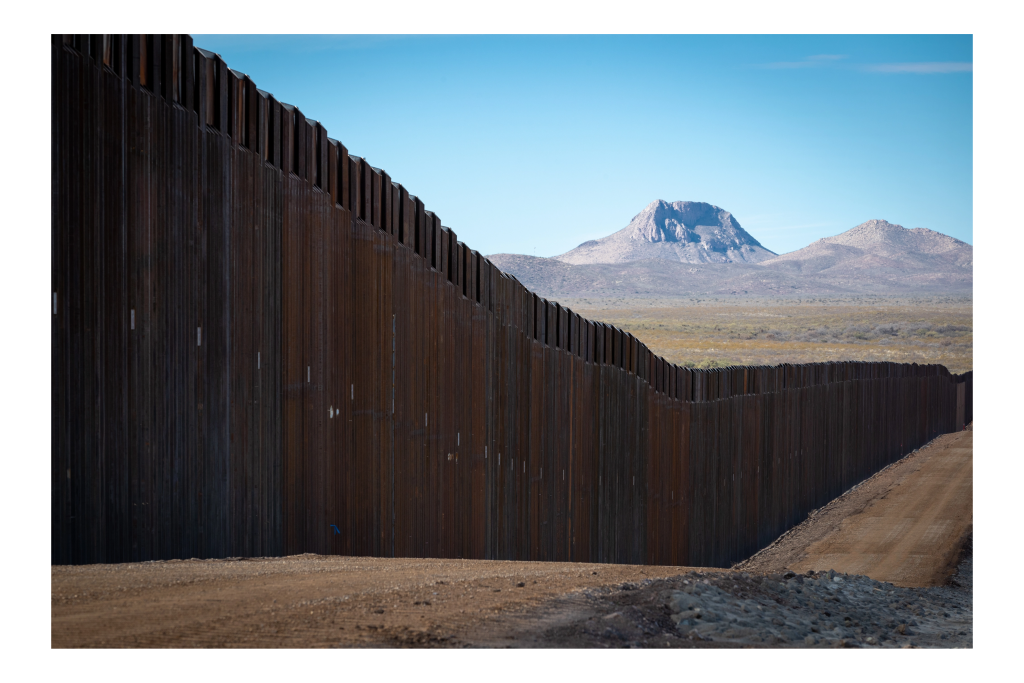What is it about walls?

Donald Trump is putting the border wall between Mexico and Texas as a cornerstone of his campaign for election.
The current conflict in Gaza and Palestine is symbolised by the wall round the West Bank. On that wall, the graffiti celebrates Leila Khaled and her leadership of aircraft hijackings which brought attention to the situation of the Palestinian people.

The world is beset by political and factional wall-building and only the occasional tearing down. As well as the photos here, we could have added many more including the DMZ between North and South Korea. The list of walls is a surprisingly long one: Hong Kong; South Africa and Mozambique; Egypt; Kuwait and Iraq; Spain; Uzbekistan and Kyrgyzstan; South Africa; Turkmenistan and Uzbekistan; Uzbekistan and Afghanistan; Botswana and Zimbabwe; India with Pakistan and Bangladesh; Saudi Arabia and Yemen, Brunei and Limbang, Kazakhstan and Uzbekistan, Bulgaria, Saudia Arabia and Iraq, Hungary, Macedonia, Poland and Belarus. Perhaps one could add the English Channel to the list as a natural barrier. And I am reminded of the so-called ‘Peace Wall’ in Belfast, Northern Ireland.

The photo above of the Poland – Belarus in winter is particularly poignant for me as people I know, working on humanitarian support on that border, report sadly that many bodies are found in the forest each spring when the snow melts. This ongoing tragedy goes largely unreported.
The big questions on walls are (1) whether they are to keep people out or keep people in, or both and (2) why they are needed?
To answer the first of these questions: it appears that mostly walls go up to keep people out. Only in Berlin, East Germany and North Korea has the motive been clearly to keep people in.
The answer to the second is more complex. Walls reflect the failure of some combination of the economic, political, and diplomatic system, both within and between countries.
• Economic because there is an attractive opportunity for people to move country which implies mismanagement and lack of opportunity at origin;
• Political because moving is a matter of personal safety, security, belief, religious freedom;
• Diplomatic because the two sides of any wall are unable or unwilling to reach some kind of accommodation.
The motivation for trying to stop people getting in is fuelled by concerns for the sustainability of communities or countries into which migration occurs; health, housing, livelihoods and cultural identity are all perceived to be at risk. Those issues are understandable. Voiced by politicians, they become populist tropes which ignore the facts about extent and detail and seek no compromise. They are designed to stoke fear and anxiety.
This situation reinforces tensions and ignores humanitarian responsibility. Walls are not just a physical barrier; they are a political statement of position in relation to the electorate. They say: “look here – see what I have done to keep you safe”.
Sadly, and largely ignored, is the fact that walls go hand in hand with inhumane conditions for potential migrants and increasingly severe political tensions within the communities that host the wall. Truth and reason are quickly lost – overtaken by hateful and false narratives. It is a short step from that state to the very existence of a wall being a matter of ideology and even theology. At that point, political choices and balanced decision-making meet a hard stop.
Moving past those buffers seems to require moments of catharsis, political at best and with violence at worst. History, and I am no great historian, point to demographic change at one end of the spectrum and rebellion, coup, or warfare at the other.
Once again, the humanitarian consequences of such an event can be catastrophic, as we are seeing in Gaza. Martin Luther King said: “We can either walk the highroad of brotherhood or the low road of man’s inhumanity to man”.
The road to brotherhood requires that the world fixes these problems at origin, reducing differentials and increasing safety. That requires money to flow not to wall-building, but to intelligent aid and development as we have observed previously here in The Aid Files. The British Government’s FCDO published its International Development Strategy in 2022 which made it more than clear that aid and development is a tool for geopolitical leverage rather than enhancing the humanitarian state. The critique from Bond UK at the time (https://www.bond.org.uk/news/2022/05/the-international-development-strategy-a-rapid-assessment) includes the following concerns that are consistent with the ‘wall’ theme:
• aimed at a domestic political audience rather than development partners globally;
• emphasis on development as part of the UK’s foreign policy … a concern in regards to delivering development outcomes;
• “trickle-down” economics aimed at improving a country’s economy does not reach;
the most marginalised communities;
• poverty alleviation … largely absent- getting just a couple of references compared with trade’s 27;
• trade and investment seem to be the central focus of the IDS without specifying the rules and principles to ensure that trade and investments deliver positive outcomes for poverty reduction, human rights, sustainable development and climate;
• focus is on finding top-down solutions rather than bottom-up approaches, which would place the needs of conflict-affected communities at their centre;
• there are references to “supporting” and “partnering” with communities, …. But the “how” is missing;
• “being locally owned” (comes) through strongly in the strategy, but there’s scant information on how the FCDO will help implement it, or how the FCDO intends to fund civil society in local communities.
The British Prime Minister, Rishi Sunak, made a statement in Downing Street on 1st March 2024, deploring the increase in racist and extreme dog-whistling, abuse and threats, not least arising from the situation in Gaza – which in turn is the result of those walls. He offered no discernible solutions other than empowering the police. That is like applying a tourniquet to sepsis – not a root cause solution. Unless our politicians are prepared to ‘ask why five times’ (see the footnote for more details*) to get to the route cause and then act clearly and decisively, there will always be room for the likes of Galloway, Andersen, Trump, Taylor- Greene and many others to spread the hatred and division about which Sunak is rightly concerned.
It is never too late, until it is too late. But it does feel like the world is on the cusp of extreme social violence. That violence may be a catharsis; however, solutions that emerge from violence are based on power, not humanity. They risk another ghastly spiral at some point.
* Asking why five times is a problem-solving method that aims to identify the root cause; it is one of the tools in the concept of Lean Management Practice. https://www.learnleansigma.com/


